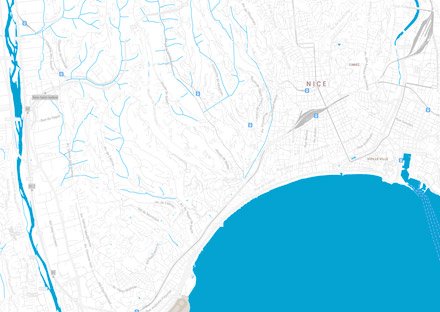EXHIBITION "VITA NUOVA" AT MAMAC
14 MAY - 2 OCTOBER 2022
MUSEUM OF MODERN AND CONTEMPORARY ART
NEW CHALLENGES OF ART IN ITALY 1960-1975
For the first time in France since 1981, MAMAC presents a major project dedicated to the Italian art scene from 1960 to 1975.
"Vita Nuova. New challenges of art in Italy. 1960-1975" offers a unique look at a major artistic scene and proposes to discover the extraordinary vivacity of artistic creation in Italy between 1960 and 1975 whose diversity remains very little known in France with the exception of that of the artists of Arte Povera.
Italy experienced a particularly fertile and exceptional period from the early 1960s to the mid-1970s inextricably linked to the richness of cinema and literature of those years.
Paradoxically, since the exhibition held at the Musée national d'art moderne-Centre Pompidou in Paris in 1981 "Italian identity. Art in Italy since 1959", curated by Germano Celant (1940-2020), there has not been in France a great panorama of this remarkable artistic scene.
Curated by Valérie Da Costa, art historian, specialist in Italian art, this exhibition fills this historical gap and offers a new look at these fifteen years of creation in 1960, which corresponds to the first exhibitions of a new generation of artists (born between the 1920s and 1940s), active in Genoa, Florence, Milan, Rome, Turin, in 1975, year marked by the tragic death of the writer, poet and director Pier Paolo Pasolini (1922-1975).
This generation of artists proposes new ways of apprehending and making art; it thus illustrates a form of vita nuova ("new life"), a title borrowed from Dante's eponymous book (Vita Nova) which, while being an ode to love, affirms a new way of writing, which marks the Italian art of this period and contributes to its international recognition.
During the 1960s and 1970s, the transformation of Italy (industrialization, consumer society, political instability...) engages new modes of representation. It is this historical-political context that is the background of the exhibition which adopts a resolutely thematic point of view and is organized around three main ensembles: A society of the image, Reconstructing nature, Memories of bodies that are considered in a porous and transversal way in order to show the circulation of artists, forms and ideas between visual issues, ecological and corporeal.
The exhibition seeks to discover a diverse, non-exhaustive artistic landscape, composed of a choice of artists for some forgotten of Italian art (especially women artists) whose work is exhibited for the first time in France and recently rediscovered in their country.
Conceived in a multidisciplinary way, "Vita Nuova" explores the links that were established at the same time between visual creation, design, cinema.
The exhibition presents 56 artists, including many female artists, through a choice of 120 works and archival documents from Italian and French public and private collections.
Artists : Carla Accardi, Vincenzo Agnetti, Franco Angeli, Giovanni Anselmo, Archizoom, Michelangelo Antonioni, Gianfranco Baruchello, Tomaso Binga, Irma Blank, Alighiero Boetti, Marisa Busanel, Pier Paolo Calzolari, Lisetta Carmi, Elisabetta Catalano, Mario Ceroli, Claudio Cintoli, Gino De Dominicis, Luciano Fabro, Federico Fellini, Giosetta Fioroni, Rosa Foschi, Piero Gilardi, Giorgio Griffa, Alberto Grifi, Laura Grisi, Gruppo Strum, Paolo Icaro, Jannis Kounellis, Ketty La Rocca, Maria Lai, Sergio Lombardo, Renato Mambor, Lucia Marcucci, Titina Maselli, Fabio Mauri, Eliseo Mattiacci, Marisa Merz, Mario Merz, Franco Mazzucchelli, Ugo Nespolo, Luigi Ontani, Giulio Paolini, Claudio Parmiggiani, Pino Pascali, Luca Maria Patella, Pier Paolo Pasolini, Giuseppe Penone, Marinella Pirelli, Michelangelo Pistoletto, Carol Rama, Mimmo Rotella, Mario Schifano, Ettore Spalletti, Gerry Schum, Cesare Tacchi, Gilberto Zorio.
The exhibition is realized in partnership with the Villa Arson in Nice which invites from June 11 to August 28, 2022 a younger generation whose contemporary works resonate with the utopian ideas of their elders in the exhibition "The future behind us. Italian art since the 1990s: the contemporary face

 StayHostel, ...
StayHostel, ... VisitMuseums, ...
VisitMuseums, ... Go outRestaurants, ...
Go outRestaurants, ... ShopsFashion, ...
ShopsFashion, ... LeisuresBeaches, sports, ...
LeisuresBeaches, sports, ... ServicesTourism, ...
ServicesTourism, ...





